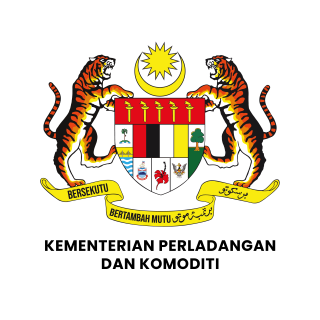KUALA LUMPUR, Aug 10 -- The Malaysian Cocoa Board (MCB) expects more smallholders’ participation with the expansion in cocoa cultivation from the current 15,000 hectares nationwide under the 12th Malaysia Plan (12MP).
Deputy director-general Dr Ramle Kasin said this aspiration would definitely require more smallholders’ participation from the current 14,000 farmers than the industry to generate handsome earnings compared with RM6.6 billion in 2019.
“Chocolate is something that people love. So, we don’t foresee any shortage in demand. However, we do acknowledge that our production needs to be improved,” he told Bernama.
Ramle said Malaysia’s total cocoa grinding was 343,000 tonnes in 2019 while this year, the country has so far produced about 1,500 tonnes of cocoa amid the COVID-19 pandemic and is relying more on import.
He said the board is not setting any specific target of the cocoa acreage expansion but stressed on the need to raise awareness among the people that this industry could enable them to earn good money as the commodity is now trading at between RM7,000 and RM7,500 per tonne.
Export revenue increased 6.3 per cent from 2011 to 2019 and last year, the contribution from the cocoa industry was about RM6.6 billion, up by 18.9 per cent from 2018.
In Malaysia, cocoa cultivation is carried out in Sabah, Sarawak, Pahang, Perak and Johor and its products is exported worldwide, including the US, Japan, Brazil, Singapore.
Malaysia has at least 53 confectionery manufacturers, of which 70 per cent of them are foreign-owned companies, including Hershey’s.
Cocoa Board to leverage blockchain technology to woo more cocoa farmers
Ramle said as the board is striving to increase the number cocoa smallholders, it would leverage the use of blockchain technology to help ensure crop’s traceability and sustainability as the way for the agriculture sector to move forward.
“Since sustainability is the ‘mantra’ in the agriculture sector, the cocoa industry will not want to miss the bandwagon. It has become our top priority to ensure that our production is not just good quality but produced sustainably,” he said.
The blockchain technology refers to a system that allow public to access the data from the digital recording information. It is duplicated and distributed across the entire network of computer systems and is made in such a way that is difficult to change, hack or cheat.
“Today, people are more concerned. They want to know the products that they consume are not harmful to them and contain only good ingredients. They don’t mind paying more for the services.
“And for chocolate that we produce, customers want to know that it has undergone proper production processes,” he said.
He said high-grade chocolate from smallholders is sometimes sold for artisan chocolate at a higher price.
On a positive note, the Ministry of Plantation Industries and Commodities has recently applied for an allocation under the 12MP to introduce the Cocoa Production Stimulus Programme as one of the strategies to encourage cocoa entrepreneurs to improve good farm management and increase the production and productivity of farm produce.
MCB to balance upstream and downstream activities
Ramle said the board is aiming to balance the upstream and downstream sector so that it can be more sustainable in terms of capital and marketing.
He said the board is currently doing a farm-to-table module for the farmers to develop small scale cocoa clusters.
“We hope by this year or next year we could start this module. I believe our production will continue to increase as our logistics is very strategic and our market is expanding.
“We just need to improve on the usage of technology. The things we do in business today are different from 20 years ago. So, we need to catch up fast,” he said.
On what is in the pipeline, he said the board is conducting research and development on how to use drone to apply fertilisers to the crop.
The industry is divided into the upstream and downstream activities: the upstream activity involves smallholders producing cocoa beans and selling them to traders; while the downstream activity entails traders grinding cocoa to become chocolate bars for manufacturers before they reach the marketing channel and eventually consumers.
Cocoa evolves from currency to commodity
Cacao bean was used as a form of currency in the Aztec Empire in the 15th century. New studies have shown that chocolate, which is produced from a tropical cacao tree named Theobroma, is good for the heart and brain, as well as to reduce distress.
Derived from a Greek word, chocolate, whether its milky, white or dark could be found anywhere and consumed by everyone although studies has confirmed that women have a stronger craving for chocolate than men.
Based on a data gathered in 2016, world chocolate retail sales stood at US$98.2 billion (US$1=RM4.19) and out of that, US$22.4 billion are contributed by the Americans consuming chocolates probably produced by big brands such as Hershey’s, M&M’s and Reese’s.
Hershey’s US chocolate market share in 2016 was 43.3 per cent, while M&M’s and Reese’s were US$688.7 million and US$171.6 million, respectively.
Cocoa was brought to Peninsular Malaysia (then Malaya) from the Amazon by the British in the 50s but only in the 70s that the crop started to expand to become the largest plantation of about 400,000 hectares in 1989.
This number plunged to only 15,000 hectares as more farmers ventured into other crops such as palm oil as they perceived cocoa as a “fussy” crop while oil palm plantation is more manageable.
-- BERNAMA
https://www.bernama.com/en/business/news.php?id=1868802
Source: bernama.com






